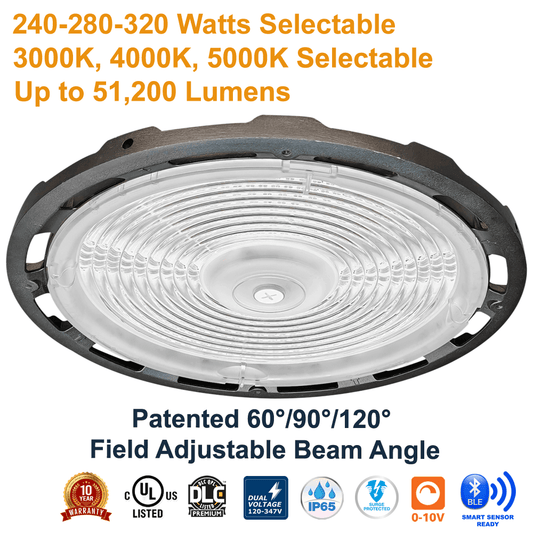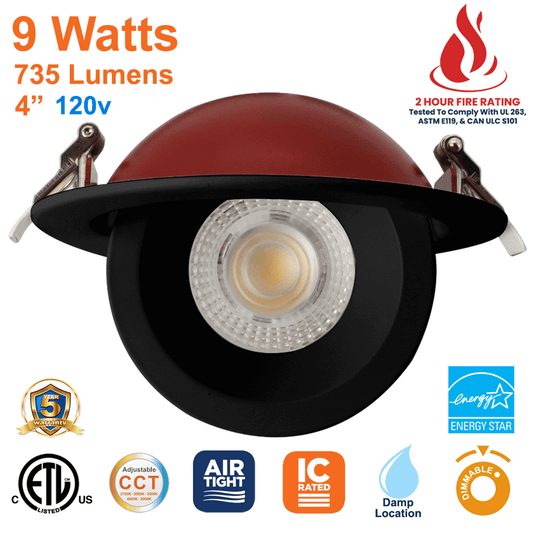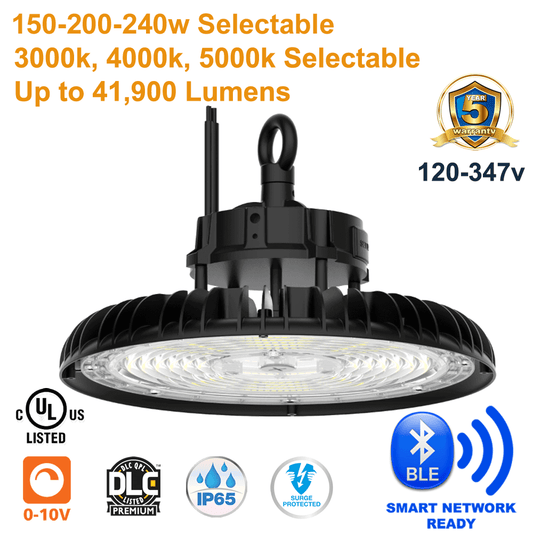Introduction
In Canada, we’re seeing more communities move toward implementing Dark Sky Friendly Lighting policies, both for residential and commercial properties. In this article, we’ll introduce the basics of Dark Sky Lighting and cover best practices.
What is Dark Sky Lighting?
Dark Sky Lighting refers to the use of light fixtures and techniques which minimize light pollution, light spill, and skyglow. We achieve this by using fixtures designed to emit light downward, concentrating it into a specific area. In the world of LED lighting, this is done by incorporating lenses and shielding into a fixture to better focus and direct the light output.

What Are The Benefits of Dark Sky Lighting?
Reduced Light Pollution
Dark Sky Lighting has been developed to reduce light pollution. In urban areas, excessive artificial light can disrupt the natural cycles of animals and plants, negatively impacting their behavior and reproduction. Excessive artificial light can also be a nuisance to neighbours.
Saving Energy and Reducing Costs
Dark Sky Lighting can also help reduce energy consumption and save costs. By concentrating light output downwards, less light is wasted, and only the necessary areas are illuminated. In some cases, this means lower wattage fixtures are used, which decreases energy consumption and lowers hydro bills.
Enhanced Visibility and Safety
Dark Sky Lighting enhances visibility and safety. By reducing glare and light pollution, objects are easier to see at night, which improves safety for pedestrians and drivers.
Preserving the Night Sky
Dark Sky Lighting also helps preserve the night sky, allowing us to appreciate its beauty and wonder. Lowering light pollution will enable us to better see stars, constellations, and other celestial objects, currently hidden by excessive light pollution.
How to Implement Dark Sky Lighting
Implementing Dark Sky Lighting can be done in a few different ways:
- Use Dark Sky Compliant Fixtures: If you are retrofitting or building a new structure, incorporate Dark Sky Compliant fixtures, with the International Dark-Sky Association’s Seal of Approval, into your project. These fixtures are designed and tested to the International Dark-Sky Association (IDA) standards
- Use the Right Amount of Light: Make sure your fixture provides the proper light coverage and is not excessive. For parking lots and other commercial projects, we can produce a lighting design to guide you in choosing the correct fixtures.
- Use Lighting Controls: Another great way to reduce light pollution is incorporate controls such as; timers, motion sensors, dimmers, and photocells. Controls can turn fixtures on/off when no light is required, or can dim them when there is no occupancy in the area.
- Choose the Correct Colour Temperature: IDA Approved fixtures can only use low colour temperatures, usually 3000K or below. If you’re not using an IDA Approved fixture, opt for a light source which has a colour temperature no higher than 3000k.
- Use Light Shields: Use shields or covers to prevent the fixtures light output from spilling onto adjacent areas or up into the sky.
- Install IDA fixtures correctly: IDA Approved fixtures qualify when the light output is pointing down, don’t install the fixtures so the light output points horizontally or bleeds upwards.
Who Are The International Dark-Sky Association?
A non-profit organization, the International Dark-Sky Association actively promotes and advocates for responsible lighting practices. They offer resources and certifications for lighting designers and municipalities to promote the use of dark sky lighting. Since its founding in 1988, the IDA has been advocating for responsible outdoor lighting policies and practices.
The IDA offers various resources, programs, and services to help individuals, communities, and businesses achieve Dark Sky Lighting status. These include the Fixture Seal of Approval program, the Dark Sky Places program, the Lighting Toolkit, and the Annual International Dark Sky Week.
IDA Fixture Seal of Approval Program
The Fixture Seal of Approval (FSA) program is a voluntary certification to recognize lighting fixtures that minimize glare, light trespass, and skyglow. FSA fixtures emit light only where and when it is needed, reducing energy waste and pollution.

Dark Sky Places
The Dark Sky Places program is a recognition program that honors areas with exceptional night skies and promotes responsible lighting practices. The program includes five designations: International Dark Sky Parks, International Dark Sky Reserves, International Dark Sky Sanctuaries, Dark Sky Friendly Developments of Distinction, and Dark Sky Communities. Explore has a great list of 100 Dark Sky Areas across Canada, you can check it out by clicking this link.
Lighting Toolkit
The Lighting Toolkit is a comprehensive guide to provide information on achieving Dark Sky Lighting in residential, commercial, and industrial settings. It includes information on light fixtures, installation, maintenance, and policy.
International Dark Sky Week
International Dark Sky Week is an annual event that the IDA established to celebrate the beauty of the night sky and the need for us to protect it. Taking place every April, International Dark Sky Week includes activities such as stargazing, lectures, and workshops, set up to encourage individuals and communities to take action against light pollution.
Conclusion
Dark Sky Lighting is an effective solution against light pollution. It also offers benefits beyond the preservation of the night sky, including reduced energy consumption, and enhanced visibility. By choosing IDA Approved LED fixtures, installing them correctly, and incorporating lighting controls, you'll play a role in the reduction of light pollution and help protect the environment.
Dark Sky Lighting FAQs
Q: What is Dark Sky Lighting? A: Dark Sky Lighting is a lighting design approach that reduces light pollution and preserves natural darkness.
Q: Why is Dark Sky Lighting important? A: Dark Sky Lighting is important because it protects nocturnal wildlife, saves energy, and preserves the beauty of the night sky.
Q: How do I implement Dark Sky Lighting? A: You can implement Dark Sky Lighting by using IDA Approved fixtures that direct light downwards, shield the light source, and have the appropriate colour temperature.
Q: What is the International Dark-Sky Association? A: The International Dark-Sky Association actively promotes and advocates for responsible outdoor lighting practices to help in the preservation of the night sky.
Q: How does light pollution impact wildlife? A: Light pollution can disrupt migratory patterns, breeding cycles, and feeding habits of wildlife.
Q: What are the benefits of Dark Sky Lighting? A: Dark Sky Lighting reduces light pollution, promotes better sleep, preserves wildlife habitats, and allows for better astronomical observations.























